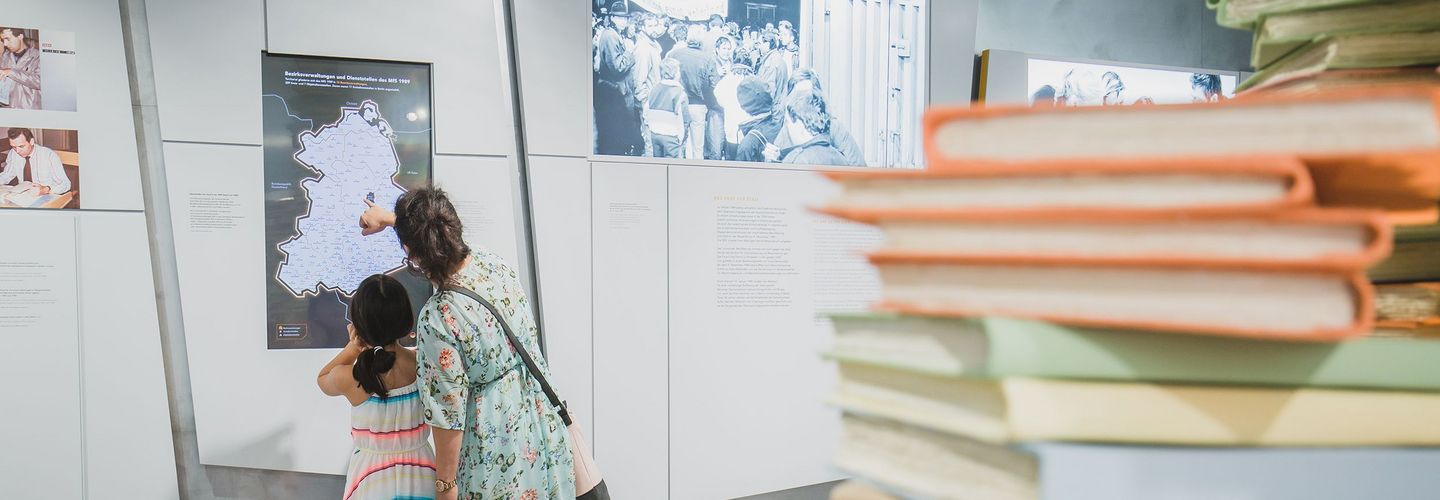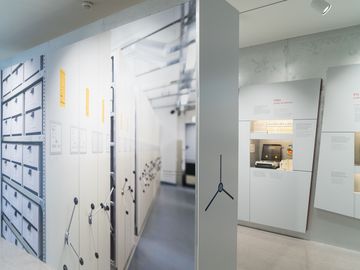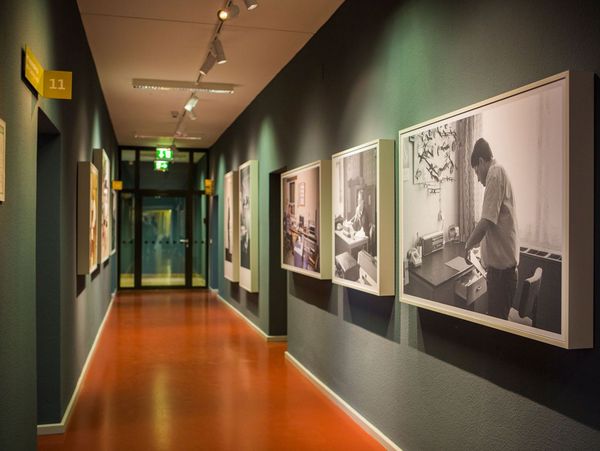Access to Secrecy
An oversized „walk-in file“, an original index card paternoster, a sculpture of files – the exhibition shows the collection of information violating human rights and the effect the GDR secret police had on people’s lives.
Over four floors the exhibition illustrates the Stasi Records Archive‘s current tasks and leads back in time to when the Secret Police created the files.






